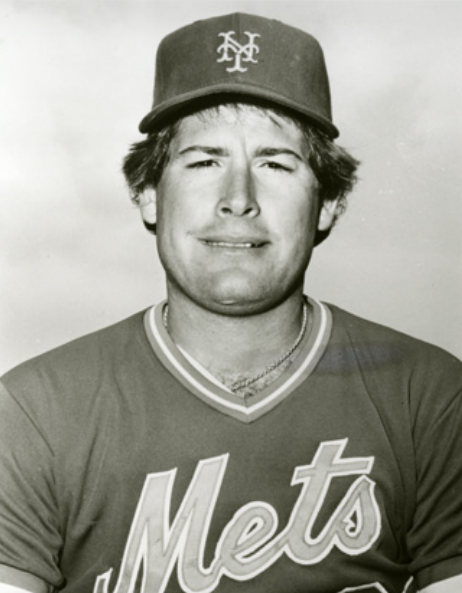I’ve always had a soft spot for guys who throw trick
pitches, whether it’s a folly floater, a screwball, a knuckleball or a
submarine style pitcher. It’s a totally
different look to befuddle batters and often leads to great success due to the
great change in velocity or the sheer uniqueness of the spin or the
delivery. Some of them are even less
stressful on the arm. It makes you
wonder sometimes why more people don’t embrace one of these weapons for their
arsenal given the great success possible when you mix it up with the usual
fastballs, changeups, curves and sliders.
The problem, of course, is that not only aren’t there many
role models on whom to pattern your own effort, you also find that some of
these trick pitches are difficult to control.
Teams have very little patience with folks who walk the ballpark, and
thus the early goodwill built by reliever Doug Sisk turned him from reliable
setup guy and occasional closer to someone who was booed so mercilessly that
the manager went so far as to only use him in games on the road to help him
avoid the hostility at home.
Once upon a time Doug Sisk was an asset in the Mets
bullpen. From ages 24 to 26 working
exclusively in relief, Sisk posted a not-too-impressive 6-8 record over a 125
game intro the majors he owned a sparkling 2.12 ERA. People simply were not hitting him. Even during that prime period of his career
he was walking too many and fanning too few – 117 free passes in 190 IP with
only 69 strikeouts. However, he yielded
just 7 hits per 9 IP and only 0.1 HRs per 9 IP, a fine testament to the sinking
action of his sidearm delivery. With
that kind of work keeping people from scoring it seemed like he could be a part
of the bullpen future.
In his first full season with the Mets in 1983 he was in the
bullpen when Tom Seaver made a triumphant return to the Mets, going mano a mano
against none other than Steve Carlton after his six-year exile to
Cincinnati. When Seaver started
fatiguing in the 7th inning, Sisk was summoned into the scoreless
game for the final three frames. The
Mets rallied to score 2 runs to take a 2-0 lead and Sisk let a few men on in
the 9th as would be typical of his appearances, but he managed to
get Mike Schmidt to fly out and Tony Perez to whiff to earn his first major
league victory.
Pitching coach Mel Stottlemyre once said, “We use to use
Sisk to get to Orosco. Now they’re both
game enders. Doug’s sinker explodes. If I didn’t know better, I’d suspect
him of throwing a spitter.”
There were certainly signs that this tightrope walking act
couldn’t last forever. In his 1984
season during which he delivered a 2.09 ERA he was walking an alarming 6+
batters per 9 IP. Then in 1985 the
wheels came off completely. His ERA
ballooned to 5.30 and the walks continued to pile up. Arm troubles surfaced for the first time
since he was in school (which, ironically, led him to the sinking sidearm pitch
in the first place). He felt he couldn’t
get the action on the pitch which was sometimes erratic but always down
explosively somewhere around the plate.
In 1986 and 1987 Sisk was forced to pitch exclusively out of the stretch due to his ailing shoulder and could not get the full windup going anymore. Ironically he posted his best strikeout numbers and reduced the walks, but by then he was a pariah. In one hate mail letter posted to Sisk it said, “Take one Tylenol and one cyanide capsule – per day!”
After the World Championship season of 1986 Sisk managed to
hang on for one more go in a Mets uniform before he was dispatched to Baltimore
for one lackluster season. He then missed the entire 1989 season and most of
1990 due to surgery on both knees. His
career ended in Atlanta in 1991 during which he appeared in just 14 games and
was out of baseball at age 33.
Nicknamed “Risk” for his propensity to put any lead into
jeopardy, it was so bad that manager Davey Johnson got a Rolaids commercial due
to the stress level watching Sisk perform on the mound. He was one of the triumvirate of players
affectionately known as the “Scum Bunch” along with Orosco and Danny Heep who
controlled the back of the airplanes (including the infamous flight which
caused a ban from United Airlines due to the $7500 in damages the players
caused in a booze, cake and coke-fueled bacchanalia.
It was perhaps best summed up by a fan who once quipped,
“Sisk is the only pitcher I know who would walk the bases loaded and throw a
double play grounder to get out of it.”
That, in a nutshell, is the man the fans loved to hate.





2 comments:
Great post Reese. If you haven't already check out Davy's book "Bats"about the 1985 season. There is a great chapter on Davy trying to get Sisk to work with Mel.
I remember my brother saying he use to run into Isringhausen in local Queens bars - I asked him about Sisk, and he said no, but he did used to run into Brent Gaff and Tom Gorman in the bars.
Sisk had crazy high walk and HBP totals (300 in 523 IP), and crazy low K rate (3.35), but also had 90 GIDPs, I think (I saw it the other day, can't find it again) due to that nasty sinker.
ERA his first 3 Mets seasons (190 innings) was about 2.10, so he was completely unnerving but very effective then.
Post a Comment